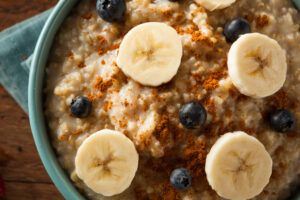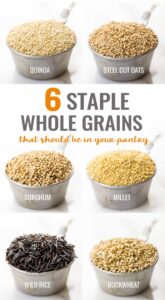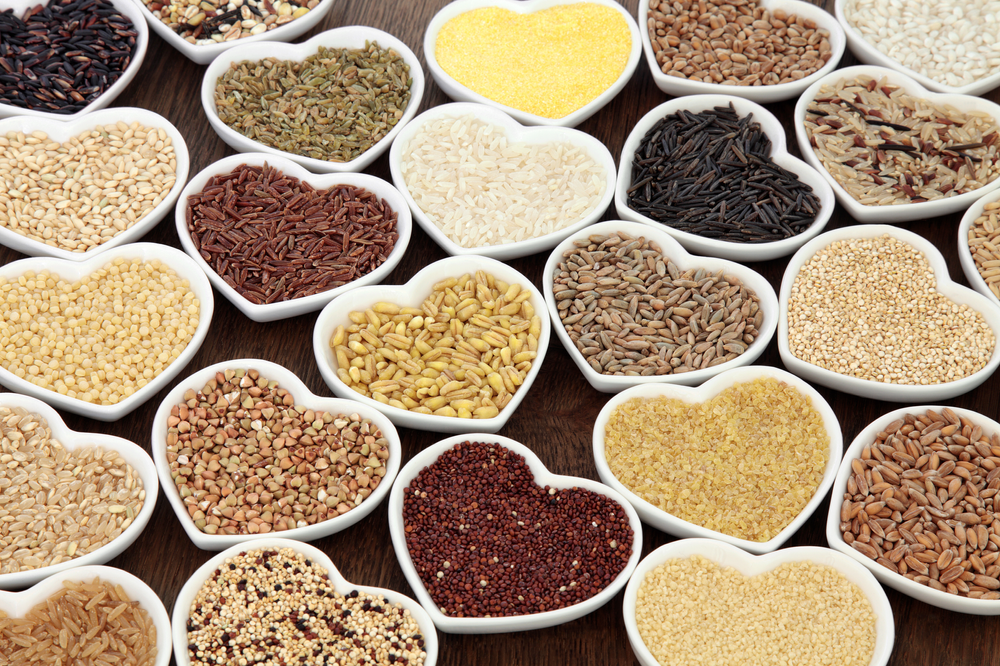While taking a trip down the grocery aisle, you must have probably come across a range of whole grain products. Most are organic and have attractive labels on them as well. Well, this is because these products are packed with nutrition and fiber.
Whole grain foods are consumed by people who want to switch to a healthy eating habit. It is also recommended if you’re seeking to lose some pounds for an upcoming event or are borderline intolerant to gluten.
So, if you want to incorporate whole grain foods in your diet but are not sure where to start, then you need not worry. Here are a few tips and tricks you can follow to up your intake of whole grain foods and make your journey towards eating clean and healthy easier than it needs to be.
What Are Whole Grain Foods?
But first, what are whole grain foods? Isn’t bread included in this? After all, it is made of wheat flour. Well, the answer is no. Whole grain foods are a bit different. Here is a breakdown to make it easier to understand the technicalities behind it.
Whole grain or whole grain food are those which consists of the grain of any cereal that has its germ, endosperm, and bran intact. In comparison with processed or refined grains, these only contain the endosperm. Thus, whole grain foods as the name suggests include the grain in its whole form without having gone through any additional processes of refinement. Some examples of these are whole oats, millet, corn, brown rice, and quinoa.
Why They’re Healthier

So, what exactly is the difference then in its consumption? Well, whole grain foods are more nutritious and contain more fiber. This helps regulate and balance out your gut health, keep you fuller for longer, and prevent bloating. Not only this but whole grain foods have been linked to lowering the risks of type 2 diabetes, certain types of cancer, heart problems, and obesity. It’s what makes you stay active and healthy overall!
So, now that you know what makes whole grain foods so in demand these days, you might want to add them to your diet. If you’re struggling to do so, then read ahead to learn a few tricks on how to go on about it.
Giving Your Pantry a Makeover
Take out some time over the weekend and analyze your pantry. See how much refined flour or white processed bread is stored. Calculate how long before it all runs out and you have to make your grocery run. In this way, you will not be wasting the food that is already in your pantry but simply mentally preparing yourself for the switch up ahead. You can in the meanwhile search up some recipes that can help makes whole grain foods taste good.
Not everyone likes brown rice or barley and adjusting to the taste may take time as well. Once the big day arrives and you go for your groceries, pick up whole grain grains first. Be it oats, corn, whole grain rye, or even buckwheat. Try out different types and see which one you adjust to best.

Read Labels
Secondly, reading labels before buying products can help make the search easier. In addition, it’s important to be wary of how certain whole wheat foods such as brown rice or quinoa may be challenging to prepare and their cooking time varies. Thus, you may be relying on store-cooked whole grain foods at first – this is completely okay! It takes time to learn how to get them right. Also, be cautious of storing whole grain foods properly – keep them in air-tight jars and purchase them in small quantities to prevent spoilage.

Start Small and Slow
At first, the replacement may be difficult. You may face digestive problems as well, but do not stress out. Starting on something new always has its downside. It takes time before your body adjusts to whole grain foods. However, the end result is worth it. Once you get the hang of it, you will never go back to refined grains again. So, remember to stay focused and determined. If you want, you can get in touch with a nutritionist that can guide you better on how much whole grain foods to consume when starting off.
Mix It Up and Keep Trying
Make sure you try out different types of whole grain foods. If you don’t like how yo
ur oats turned out the first time, do not give up! Try out a different approach to prepare them. If cooking them in milk wasn’t appealing to your taste buds, then try out overnight oats with a bunch of fruits and nuts. This can help you fall in love with whole grain foods without having a bad taste left in your mind. Do the same for millet, quinoa, and brown rice as well.

These 6 whole grains are must haves in your kitchen pantry!
The Bottom Line
Whole grain foods are packed with vitamins, minerals, and nutrients. They’re all the rage these days and on everyone’s diet plans. If you have been finding it hard to adapt to the taste and intake of whole wheat foods, then you are not alone. Adjusting to this new habit can take time. Just remember to stay focused and mindful of what you eat.
So, what are you waiting for? Get started on it today! Bring your friends and family members on board as well. The more the merrier! Having others on the same path as you can help make the journey a breeze.
Once you switch to whole grain foods, there’s no going back! They’re packed with fiber, vitamins, and minerals that keep you full for longer and improve your gut health. And a happier and healthier gut ensures a healthier you! https://www.nutritionwithwellness.com/vegetarian-diet/

